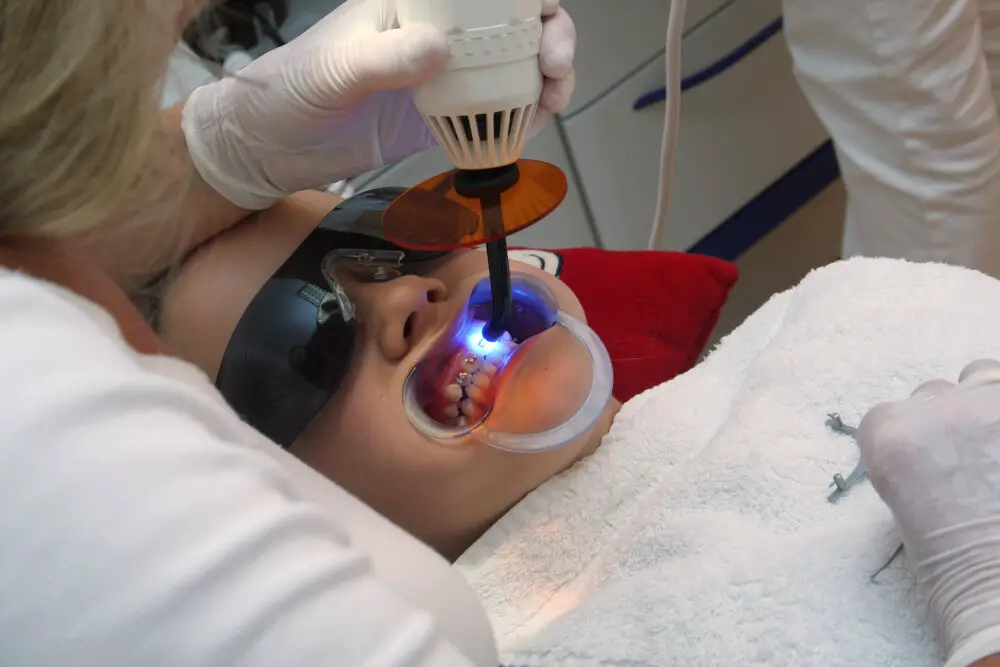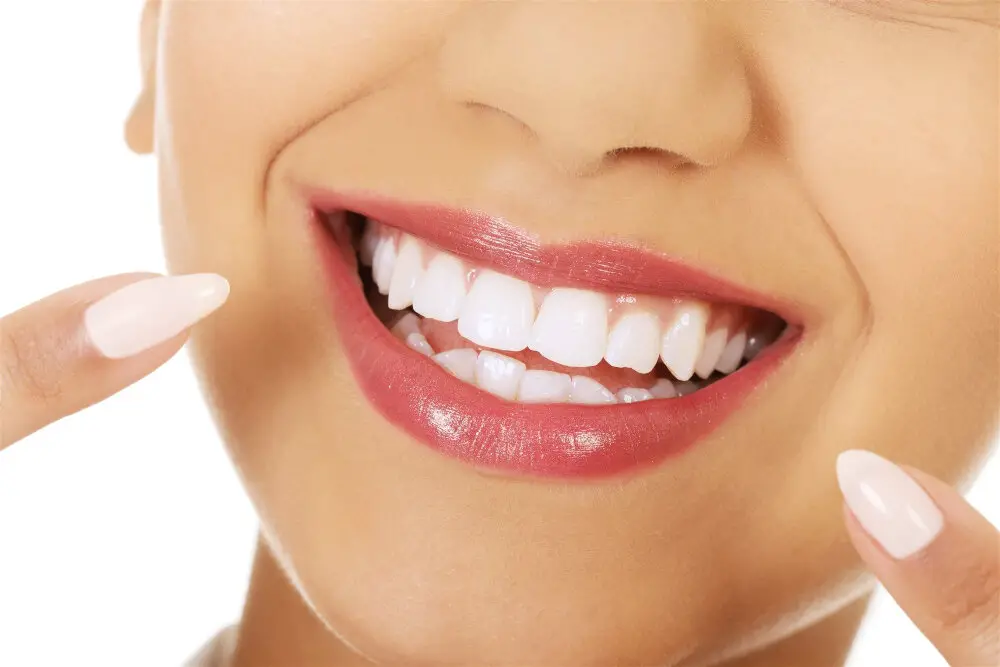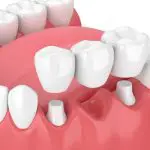Silver Teeth: What They Are and Why They’re Used in Dentistry

Silver teeth, also known as dental amalgam, have been used in dentistry for over 150 years. It is a type of filling material that is composed of a mixture of metals such as silver, mercury, tin, and copper. Despite being controversial due to the presence of mercury, silver teeth are still used in modern dentistry due to their durability, affordability, and ease of use. They are commonly used to fill cavities in teeth that have decayed or been damaged by trauma. The use of silver teeth has been the subject of debate in recent years due to health concerns related to mercury exposure. However, the American Dental Association (ADA) and other prominent dental organizations maintain that the use of dental amalgam is safe and that its benefits outweigh any potential risks. In fact, silver teeth are still one of the most commonly used filling materials in the world of dentistry, despite the fact that alternative materials such as composite resin and ceramic have become more popular in recent years.
Silver teeth, also known as dental amalgam fillings, are a common dental restoration material used to repair cavities caused by tooth decay. The silver-colored filling is composed of a mixture of metals, including silver, tin, copper, and mercury. The mercury content in dental amalgam has caused some controversy in recent years, as it has been suggested that it could potentially be harmful to human health. Despite these concerns, silver teeth remain a popular and effective choice for dental fillings due to their durability and affordability. In fact, they have been used in dentistry for over 150 years and are still widely used today.
Silver teeth, also known as dental amalgam, have been used in dentistry for over 150 years. Amalgam is a mixture of metals, including silver, mercury, tin, and copper, that is used to fill cavities in teeth. In the mid-19th century, amalgam became popular because it was affordable and easy to use compared to other filling materials. However, concerns about the mercury content in amalgam have led to controversy and criticism in recent years. Despite this, many dentists still use amalgam as a filling material due to its durability and effectiveness in treating dental decay.
Composition and Properties of Silver Teeth

Silver teeth, also known as dental amalgam or silver fillings, are a common dental material used to fill cavities. Composed of a mixture of metals, including silver, tin, copper, and mercury, dental amalgam has been used in dentistry for over 150 years. Despite recent controversies surrounding the safety of amalgam fillings, they remain a popular choice for dental restorations due to their durability and affordability. The properties of silver teeth make them an ideal material for dental fillings. Dental amalgam is strong, resistant to wear and tear, and can withstand the forces of chewing and biting. Additionally, silver fillings are relatively inexpensive compared to other dental materials, making them a cost-effective option for patients. However, some concerns have been raised about the mercury content in dental amalgam and its potential impact on human health. While the American Dental Association and other organizations maintain that the use of amalgam fillings is safe, some individuals may choose to avoid silver teeth for personal reasons or due to health concerns.
Silver teeth, also known as dental amalgam, are a type of filling material used in dentistry. These fillings are made up of a mixture of metals, including silver, tin, copper, and mercury. The silver content in dental amalgam ranges from 50-70%, making it a durable and long-lasting option for fillings. The mixture is mixed together and applied to the cavity, where it hardens and forms a strong bond with the tooth. Despite some concerns about the safety of mercury in dental amalgam, it is still considered a safe and effective option for many patients. In fact, it has been used for over 150 years in dentistry and is still a popular choice for fillings today.
Silver teeth, also known as dental amalgam, are a popular choice for fillings due to their durability and affordability. Made from a combination of silver, tin, copper, and mercury, they have been used in dentistry for over 150 years. One of the primary benefits of using silver teeth is their strength and longevity, which can withstand the pressure of chewing and last for many years. They are also more affordable than other materials like gold or porcelain, making them a practical option for many patients. Additionally, silver teeth are easy to place, and the procedure is relatively quick, making it ideal for those who need to have multiple fillings done at once. However, some patients may be concerned about the mercury content in dental amalgam, and newer materials like composite resin may be a better choice for those with health concerns.
When it comes to dental materials, there are various types of materials available, each with its own set of advantages and disadvantages. Silver teeth, or amalgam fillings, are one of the most commonly used dental materials due to their durability, strength, and cost-effectiveness. However, they have been criticized for their appearance and the fact that they contain mercury. Alternative dental materials, such as composite resin, ceramic, and gold, offer better aesthetics and do not contain mercury, but they can be more expensive and less durable than amalgam fillings. Ultimately, the choice of dental material depends on the patient’s individual needs and preferences, as well as the dentist’s recommendation.
Uses of Silver Teeth in Dentistry

Silver teeth, also known as dental amalgam, have been used in dentistry for over a century. It is a mixture of various metals, with silver being the primary component. Dental amalgam is popular among dentists as it is highly durable, cost-effective, and easy to use. Silver teeth are mainly used for filling cavities in molars and premolars. The material is long-lasting and can withstand the forces of chewing and grinding, making it an excellent option for restoring damaged teeth. Moreover, silver teeth are also used for their antibacterial properties. The material is effective in killing bacteria that cause tooth decay, preventing further damage to the tooth. Amalgam fillings are also resistant to wear and tear, making them a popular choice for teeth that undergo a lot of stress, such as molars. However, there have been concerns about the safety of using dental amalgam, as it contains mercury. Despite this, many dental organizations still recommend the use of silver teeth as a safe and effective option for restoring damaged teeth.
Silver teeth, also known as dental amalgam, have been used in dentistry for over 150 years. While controversy surrounds the use of amalgam due to its mercury content, it remains a popular choice for restorative purposes. Amalgam is composed of silver, tin, copper, and mercury, and provides a strong and durable filling for cavities in the teeth. Its malleable nature allows for easy manipulation and placement, and it is resistant to wear and tear. In addition, amalgam is relatively inexpensive compared to other filling materials, making it a cost-effective option for patients. Despite concerns over its safety, the American Dental Association and other organizations continue to endorse the use of amalgam as a safe and effective restorative material.
Silver teeth, or dental silver amalgam, have been used in dentistry for over a century due to their durability and affordability. However, in recent years, the use of silver teeth has become a controversial topic due to concerns about the potential health risks associated with the mercury content in the amalgam. Despite this controversy, many dentists still use silver teeth as a cosmetic option for patients who want a more traditional look for their fillings. While there are alternative materials available, such as tooth-colored composite fillings, silver teeth remain a popular choice for those who prioritize function and cost over aesthetics. Ultimately, the decision to use silver teeth for cosmetic purposes should be made on an individual basis after discussing the potential risks and benefits with a qualified dental professional.
Silver teeth, also known as dental amalgam, are a popular choice for fillings due to their durability and affordability. One of the main advantages of silver teeth is that they can withstand the wear and tear of chewing for up to 15 years. They are also less expensive than other materials, making them a practical option for those on a budget. However, there are some potential disadvantages to consider. Some people may have an allergic reaction to the mercury in dental amalgam, and there is also concern about the impact on the environment when these fillings are disposed of. Additionally, silver teeth are not as aesthetically pleasing as tooth-colored fillings, which can be a concern for those who want a more natural-looking smile. Overall, while silver teeth have their benefits, it’s important to weigh the pros and cons with your dentist before making a decision.
Procedure for Getting Silver Teeth

Silver teeth, also known as dental amalgam fillings, have been used in dentistry for over a century. These fillings are made up of a mixture of metals, including silver, mercury, tin, and copper. They are used to fill cavities in teeth and are known for their durability and affordability. The procedure for getting silver teeth is relatively straightforward and can usually be completed in one dental appointment. The first step in getting silver teeth is for the dentist to numb the area around the tooth that needs to be filled. This is done using a local anesthetic, which will prevent the patient from feeling any pain during the procedure. Once the area is numb, the dentist will remove any decay that is present in the tooth using a dental drill. After the decay is removed, the dentist will clean the tooth and prepare it for the filling. The silver filling material is then placed in the cavity and shaped to fit the tooth. Finally, the filling is polished to smooth out any rough edges and to ensure that it blends in with the rest of the tooth. The entire procedure usually takes less than an hour, and patients can resume their normal activities immediately afterward.
Preparation for getting silver teeth involves a thorough consultation with a dental professional who will assess your oral health and determine if silver teeth are the best option for you. The process typically involves removing any decay or damage in the affected tooth, followed by shaping the tooth for the silver filling to fit securely. The dentist will then apply a special adhesive to help the filling bond to the tooth, before carefully placing the silver filling in place. While silver teeth are a popular and effective option for restoring damaged teeth, it is important to maintain proper oral hygiene practices to ensure their longevity and prevent further damage.
Silver teeth, also known as dental amalgam fillings, have been used in dentistry for over 150 years as a reliable and cost-effective way to fill cavities. The process of getting silver teeth involves removing any decayed or damaged tooth tissue and then filling the cavity with a mixture of silver, mercury, and other metals. The amalgam filling is then shaped to fit the tooth and polished to a smooth finish. While there has been some controversy over the safety of amalgam fillings due to the potential release of mercury vapor, the American Dental Association and other major health organizations have deemed them safe for use in dentistry. Despite the availability of newer, tooth-colored filling materials, some dentists still prefer to use silver teeth for their durability and longevity.
After getting silver teeth, it is crucial to maintain proper aftercare to ensure their longevity and prevent any complications. Firstly, avoid consuming hot or cold drinks and foods for the first few days after the procedure to prevent sensitivity. Secondly, maintain good oral hygiene by brushing twice a day and flossing daily, paying attention to the silver teeth. Thirdly, avoid chewing on hard or sticky foods that may damage or dislodge the silver teeth. Lastly, visit your dentist regularly for check-ups and professional cleanings to ensure the silver teeth are in good condition and to address any issues promptly. By following these aftercare tips, you can enjoy the benefits of your silver teeth for years to come.
Controversies Surrounding the Use of Silver Teeth

The use of silver teeth in dentistry has been a topic of controversy for years. While some dentists swear by the benefits of silver amalgam fillings, others criticize them for their potential health risks. One of the main concerns about silver teeth is the fact that they contain mercury, a toxic substance that can be harmful to humans. Although the amount of mercury in silver fillings is considered safe by many health organizations, some experts argue that even small amounts can have a negative impact on a person’s health over time. Additionally, there are concerns that the removal of silver teeth can release mercury vapors into the air, putting patients and dental staff at risk. Another controversy surrounding the use of silver teeth is their appearance. While silver fillings are durable and long-lasting, they are also highly visible, making them a less aesthetically pleasing option for many patients. This has led to the rise in popularity of tooth-colored composite fillings, which are made from a mixture of plastic and glass and can be matched to the color of a patient’s natural teeth. However, silver teeth are still widely used in dentistry due to their durability and cost-effectiveness. It is important for patients to discuss their options with their dentist and weigh the potential benefits and risks before deciding on a course of treatment.
While silver teeth, also known as dental amalgam, have been used in dentistry for over a century, there are still safety concerns associated with their use. Amalgam is made up of a mixture of metals, including silver, mercury, and tin. The use of mercury in dental amalgam has raised concerns about potential health risks, particularly for pregnant women and children. While the American Dental Association and the World Health Organization consider amalgam to be a safe and effective material for dental restorations, some individuals may be sensitive to the metal or have concerns about its long-term safety. As with any dental treatment, it is important for patients to discuss their options and any concerns with their dentist.
While silver teeth, also known as dental amalgam, have been a popular option for filling cavities for over 150 years, there are now several alternatives available. One such option is composite resin fillings, which are made from a tooth-colored material that blends in with the rest of your teeth. Another alternative is porcelain fillings, which are made to match the natural color of your teeth and are more durable than composite resin. Additionally, some dentists offer gold fillings, which are a long-lasting and durable option, but can be more expensive. Ultimately, the choice between silver teeth and these alternatives will depend on factors such as cost, durability, and personal preference.
The use of silver teeth, also known as dental amalgam, has raised ethical concerns among some individuals due to the presence of mercury in the material. While the American Dental Association and other regulatory agencies have deemed dental amalgam safe for use in dental fillings, some individuals fear the potential health risks associated with the material. Others argue that the use of silver teeth perpetuates a class divide in dental care, as individuals with access to more expensive composite fillings may be able to avoid the use of dental amalgam altogether. Despite these concerns, silver teeth remain a common and effective option for dental fillings, particularly for individuals with extensive decay or damage to their teeth.
Silver teeth, also known as dental amalgam, have been a popular choice in dentistry for over a century. One major benefit of silver teeth is their durability, as they can last up to 15 years. Additionally, they are less expensive than other filling materials, making them a more affordable option for patients. However, silver teeth also have some drawbacks. They are noticeable when smiling, which can be a cosmetic concern for some people. Additionally, they contain small amounts of mercury, which can be harmful if ingested in large quantities. While the American Dental Association has deemed silver teeth safe for use, some patients may prefer alternative filling materials. Ultimately, the decision to use silver teeth should be made in consultation with a dental professional.
Silver teeth, also known as dental amalgam fillings, have been used in dentistry for over a century due to their durability and resistance to wear and tear. However, with the advent of newer and more aesthetically pleasing tooth-colored composite fillings, the use of silver teeth has declined in recent years. Despite this, they still hold a valuable place in dentistry, particularly for larger fillings in molars that require extra strength and support. Furthermore, ongoing research continues to improve the safety and performance of silver teeth, ensuring that they remain a viable option for patients in need of dental restoration. As such, while the trend may be towards composite fillings, silver teeth will undoubtedly continue to play a significant role in the future of dentistry.
In conclusion, the use of silver teeth in dentistry has been widely debated due to their traditional appearance and the potential health risks associated with the metal. However, silver teeth remain a viable option for certain dental procedures, particularly in cases where strength and durability are essential. The use of silver teeth in dentistry can provide long-lasting results and are often more cost-effective than other dental materials. Moreover, with proper care and maintenance, silver teeth can last for several years. Ultimately, the decision to use silver teeth should be made in consultation with a qualified dental professional who can help determine the best course of treatment for each patient’s unique needs and circumstances.
Conclusion

In conclusion, silver teeth, also known as dental amalgam fillings, have been used in dentistry for over a century due to their durability and affordability. Despite concerns about their mercury content, multiple studies have shown that amalgam fillings are a safe and effective option for restoring decayed or damaged teeth. However, with the rise of tooth-colored composite fillings, some dentists and patients are opting for a more aesthetic option. Ultimately, the choice between silver and composite fillings should be based on the individual’s needs and preferences, as well as the dentist’s recommendation. Regardless of the type of filling chosen, maintaining good oral hygiene and regular dental check-ups remain the key to a healthy and beautiful smile.





